Purple Toe Syndrome Warfarin
Purple toe syndrome warfarin. The diagnosis of cholesterol microembolization was made by biopsy in three cases. We encountered a patient who developed purple toes after 1 year of warfarin therapy. It is characterized by the sudden appearance of bilateral painful purple lesions on the toes and sides of the feet that blanch with pressure.
The literature has described resolution of the ischaemic symptoms on withdrawal of the warfarin and switching to a low molecular weight heparin alternative. The differential diagnosis includes warfarin necrosis and acral purpura as illustrated in this case can be the initial manifestation of warfarin induced necrosis3. Purple toes syndrome and a generalized skin eruption developed in a 73-year-old woman who was taking warfarin sodium Coumadin as well as antiarrhythmic agents after a stroke.
The syndrome usually develops 38 weeks after the start of warfarin therapy. We present a case of an 82-year-old man with bilateral blanching vivacious toes and a livedo-reticularis type rash developing 2 weeks after being loaded with warfarin for first. Warfarin generic Coumadin is the only oral blood thinner available in the United States.
Purple toes syndrome is an extremely uncommon nonhemorrhagic cutaneous complication associated with warfarin therapy. 1 This painful condition can develop quite suddenly. It is characterized by the sudden appearance of bilateral painful purple lesions on the toes and sides of the feet that blanch with pressure.
Potential adverse reactions to Coumadin that may be precipitated by alternative medicines include fatal or nonfatal hemorrhage from any tissue or organ bleeding that occurs when the PTINR are falsely affected necrosis of the skin and other tissues and miscellaneous adverse reactions including hypersensitivityallergic reactions purple toe syndrome hepatitis jaundice elevated liver enzymes. 1 They described the development of bilateral purple discoloration of the feet in six patients who had been treated with warfarin or related compounds. Cholesterol aggregation is released from an atherosclerotic plaque and aggregation is known as cholesterol emboli.
Purple toe syndrome is a rarely reported adverse effect of warfarin. Four patients who presented with purple toes syndrome several weeks after warfarin therapy was initiated are described. Both the rash and the discoloration of her feet were apparently related to use of warfarin and gradually resolved after discontinuation of the.
Four patients who presented with purple toes syndrome several weeks after warfarin therapy was initiated are described. Purple Toe Syndrome also known as trash foot appears as a blue or purple discoloration of one or more toes without any prior physical injury or cold trauma such as hypothermia.
Potential adverse reactions to Coumadin that may be precipitated by alternative medicines include fatal or nonfatal hemorrhage from any tissue or organ bleeding that occurs when the PTINR are falsely affected necrosis of the skin and other tissues and miscellaneous adverse reactions including hypersensitivityallergic reactions purple toe syndrome hepatitis jaundice elevated liver enzymes.
Cholesterol aggregation is released from an atherosclerotic plaque and aggregation is known as cholesterol emboli. Warfarin-related purple toes syndrome and cholesterol microembolization. It is characterized by the sudden appearance of bilateral painful purple lesions on the toes and sides of the feet that blanch with pressure. It usually develops 3-8 weeks after the start of warfarin therapy and is characterized by development of painful purple lesions on the toes. Purple toe syndrome is a recognised adverse effect of warfarin therapy. We present a case of an 82-year-old man with bilateral blanching vivacious toes and a livedo-reticularis type rash developing 2 weeks after being loaded with warfarin. One of the more serious causes of purple toes is Purple or Blue Toe Syndrome. 1540 entitled purple toe syndrome 1. Clinicians need to be aware as the ischaemic changes can have a significant impact on morbidity but are completely reversible if the condition is recognised early and warfarin is substituted early for alternative anticoagulation.
1540 entitled purple toe syndrome 1. The literature has described resolution of the ischaemic symptoms on withdrawal of the warfarin and switching to a low molecular weight heparin alternative. In all described cases the syndrome occurred relatively quickly after initiation of warfarin with little recommendation for treatment in patients needing continued anticoagulation. Emboli often obstruct blood vessels. Purple toes syndrome is an extremely uncommon nonhemorrhagic cutaneous complication associated with warfarin therapy. Purple toes syndrome and a generalized skin eruption developed in a 73-year-old woman who was taking warfarin sodium Coumadin as well as antiarrhythmic agents after a stroke. Cholesterol aggregation is released from an atherosclerotic plaque and aggregation is known as cholesterol emboli.



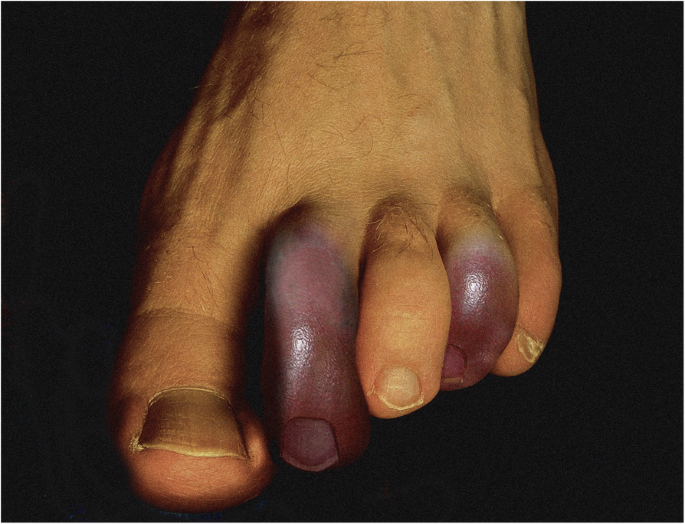

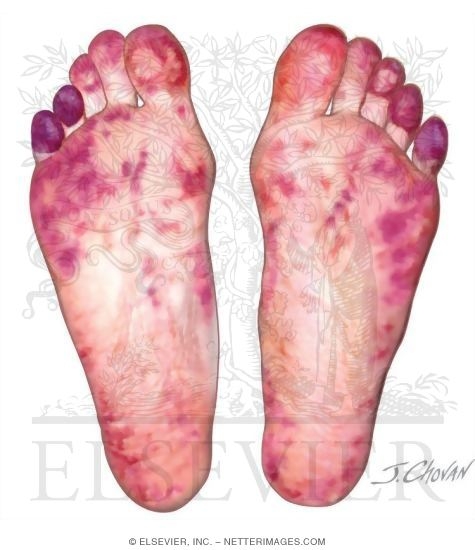

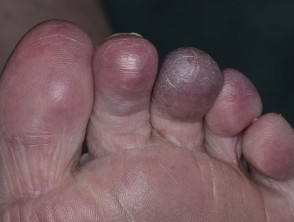
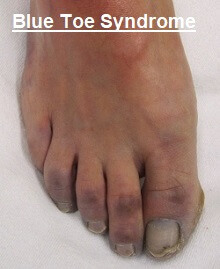

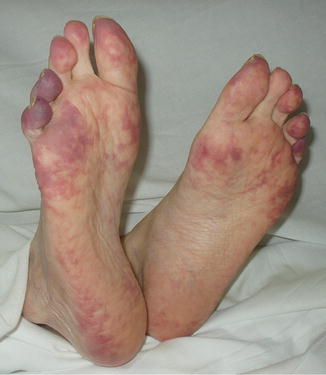
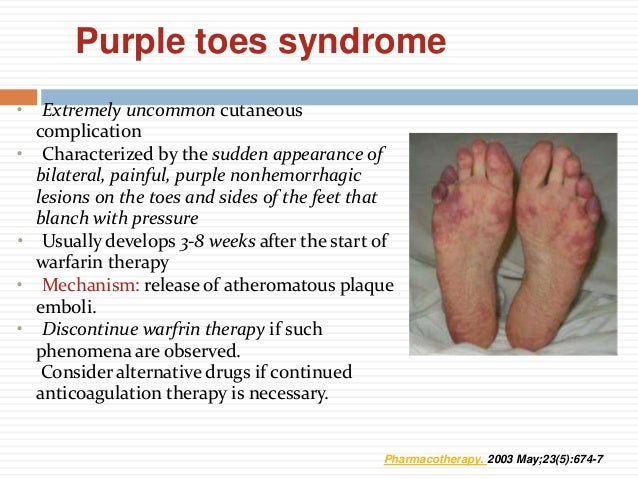
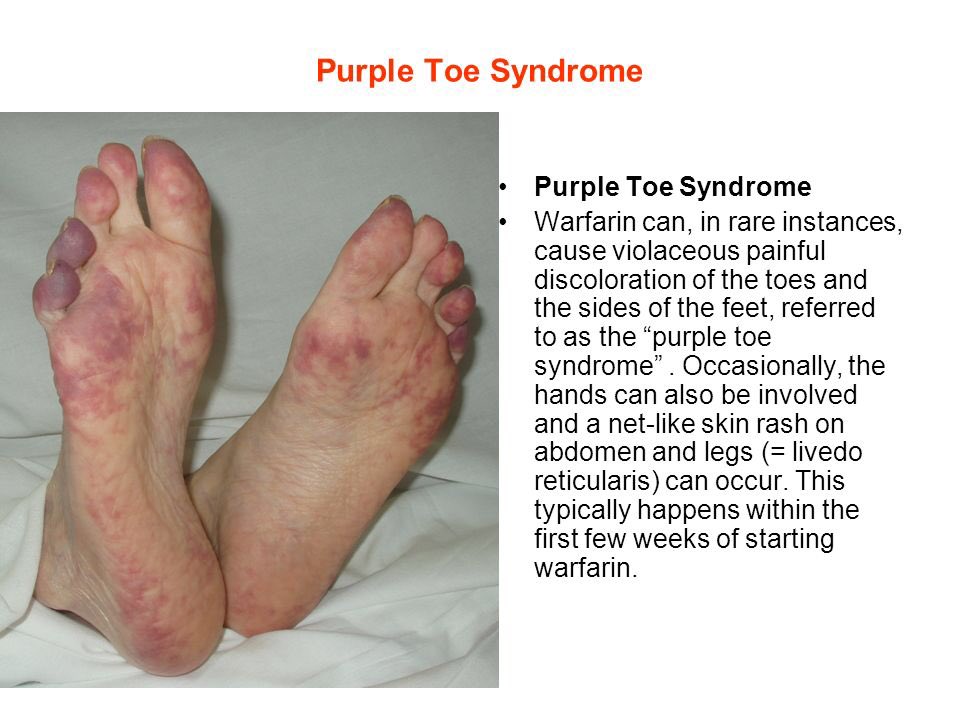



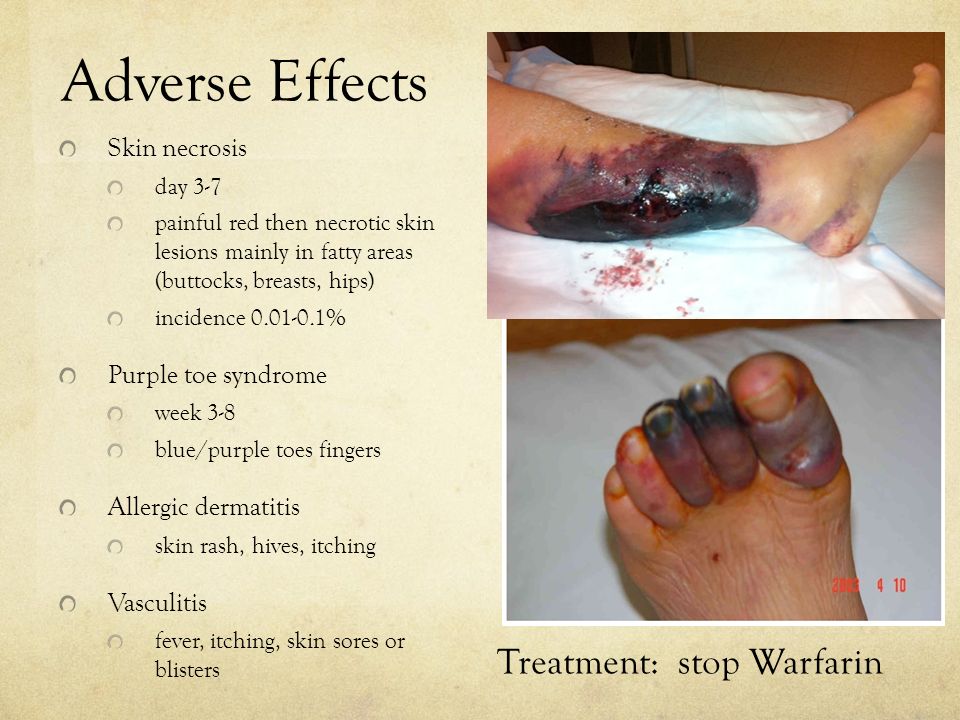

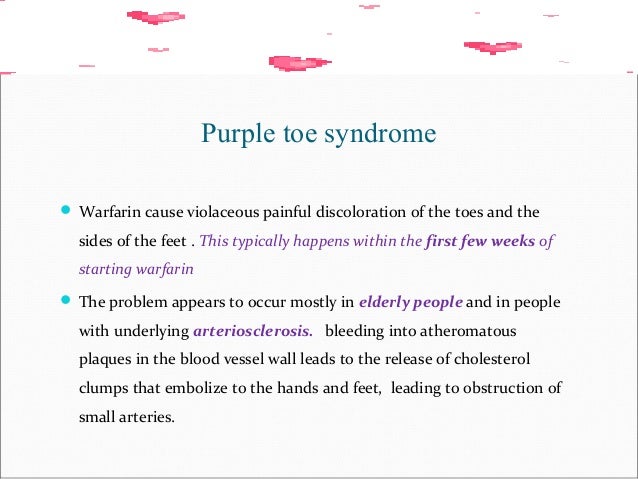










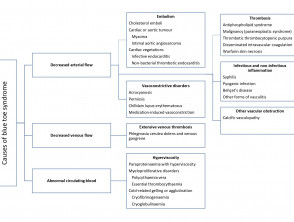



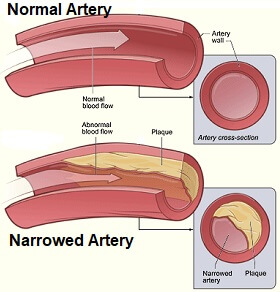

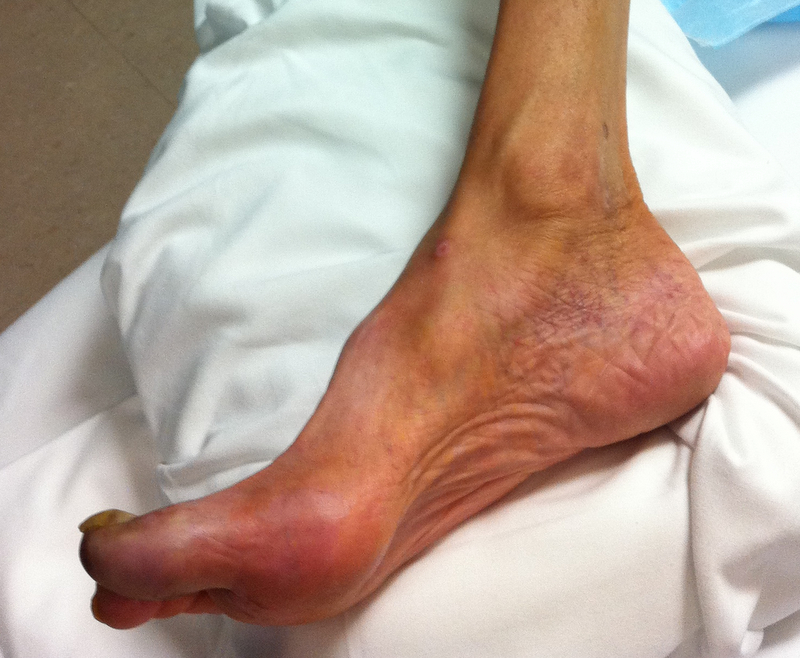


Post a Comment for "Purple Toe Syndrome Warfarin"